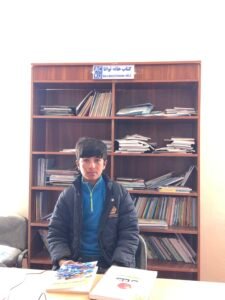
THE PANJSHIR VALLEY
From the very first, the Soviet commanders realized that Massoud’s forces in the valley represented a threat to the Hairatan–Kabul highway, after they had launched attacks on convoys near Jabal-os-Saraj and sent raiding parties into the Salang Pass along the Shutul River, a tributary of the Panjshir. A battalion of the DRA’s 8th Infantry Division was notionally responsible for controlling the valley, from a base in the small town of Rukha, but it was too small, too demoralized and too badly maintained to do anything of the sort, and the assumption amongst the Soviets was that it had an informal understanding with the rebels, that they would be left alone so long as they stayed in their cantonment and did nothing to challenge Massoud’s effective control of the Panjshir.
The decision was made to reassert Kabul’s control over the valley. A tactical group under Lieutenant-General Leonid Pechevoy, deputy commander of the 40th Army, was assembled at Jabal-os-Saraj, comprising around a thousand troops in five battalions: three Soviet (including two of paratroopers) and two DRA, and support elements including a battery of 2S5 Giatsint 152mm self-propelled guns and a dozen helicopters. The objective was the village of Pas-e Shah-e Mardan, known to be Massoud’s headquarters.
One task force of two battalions (one DRA battalion, and the Soviet 4th Air Assault Battalion – the first Soviet unit that had crossed the border overland into Afghanistan on 25 December 1979) would assemble at the village of Anawa. It would seek to strike fast to Pas-e Shah-e Mardan, bypassing Rukha and avoiding being bogged down in fighting on the way as far as possible. Having reached its objective, the force would destroy the village after seizing any captives or information deemed of intelligence value, and then withdraw. Meanwhile, the remaining forces would be making a more measured advance up the valley, mopping up remaining pockets of resistance and seizing Bazarak, the local administrative capital. Once the advance guard had rejoined the main force, it would withdraw, leaving the garrison from the DRA’s 8th Infantry Division at Rukha with, it was hoped, new zeal and authority.
The operation began at 0500hrs on 9 April, and by noon the next day, the vanguard had reached Pas-e Shah-e Mardan. Captain Leonid Khabarov of the 4th Air Assault Battalion recalled that dash:
PANJSHIR I: ATTACKERS’ ORBAT
DRA
4th Infantry Battalion (8th Infantry Division)
5th Infantry Battalion (8th Infantry Division)
SOVIET
4th Air Assault Battalion (56th Independent Guards Air
Assault Brigade)
Motor Rifle Battalion (177th Motor Rifle Regiment 108th Motor
Rifle Division)
2nd Airborne Battalion (345th Independent Guards
Airborne Regiment)
Motor Rifle Company (177th Regiment)
Engineer-Sapper Platoon
Tank Platoon (177th Regiment)
Self-Propelled Artillery Battery (1074th Artillery Regiment,
108th Motor Rifle Division)
262nd Independent Helicopter Squadron (280th Independent
Helicopter Regiment)
It was necessary to move fast. To go in like a knife into butter … We went along roads and goat paths. In our [armoured vehicles] as much as possible. Fights, fights. They managed to blow the bridges up, but we had bridge spacers – and continued forward.
There was no road beyond the village that could comfortably take Soviet combat vehicles, even the GAZ and UAZ jeeps and light trucks that supplemented the paratroopers’ tracked BMD
personnel carriers, so Khabarov’s paratroopers dismounted and continued up it until noon the next day, when they were ordered to return to the village for a general withdrawal. Meanwhile, the main force had reached Rukha, and elements of the 2nd Airborne Battalion had pursued fleeing rebels into the side valley of the Hazara River, the Panjshir’s southern tributary. Meanwhile, other soldiers from the 345th Independent Guards Airborne Regiment – including its 9th Company under Lieutenant Valery Vostrotin, which had played a key role in Storm-333 – secured the mouth of the valley. By 12 April, the operation was over.
The rebels had been forewarned of the attack by sympathizers in Anawa (it was very rare that the Kabul forces could achieve strategic surprise), but were not ready to resist a substantial mechanized attack, especially as the Soviets also used helicopters to lift some elements of the 4th Battalion past Rukha. They withdrew up the valley and, especially, into the side valleys. However, they also mined the road up the valley, and harassed the attackers with sniper fire and ambushes, especially at night.
Both sides claimed victory. The Soviets pointed to the fulfilment of their operational goals, and claimed that Massoud had been wounded in the attack, his force dispersed. The rebels likewise claimed to have inflicted severe casualties on the attackers, downing no fewer than ten helicopters, and losing just four men. These last claims are highly dubious, but the point is that the rebels did not seek to confront the attackers on their own terms, rather to withdraw in good order and then regroup afterwards. Soviets claimed they numbered up to a thousand, the rebels themselves say there were only some 200 real fighters, and beyond some captured AK-47s and Chinese Type 56 copies, most were armed with ageing bolt-action rifles, typically the .303 Short Magazine Lee-Enfield. Despite Moscow’s claims, it is clear that Massoud’s organization was not seriously affected – indeed, there would be two further Panjshir offensives later that year. As for the garrison in Rukha, attempts to leave such forces in the Panjshir, especially of Afghan troops, would never prove successful in the long term. Beset with periodic attacks, from sniping to mortar fire, and sapped by desertion, its miserable soldiers simply hunkered down in their cantonment rather than dominating the upper valley, as had been planned.
To read the book please send an email to: info@panjshirprovince.net



